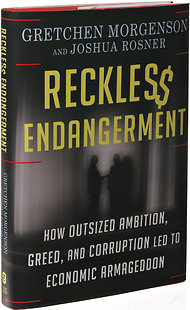The failure of Hope for Homeowners to prevent foreclosures is sparking a blame game in Washington. The Department of Housing and Urban Development, which runs the voluntary program, says Congress made it too restrictive and expensive for homeowners.
Congressional leaders say the program’s failure — only 357 people have signed up since Oct. 1 — shows that lenders aren’t willing to modify loans voluntarily and they need to be forced to do so.
But HUD officials say other problems are hampering the program’s success. In order to refinance through Hope for Homeowners, applicants must certify they did not supply false or misleading information on a previous loan application. The HUD program also requires homeowners to supply two years of financial records.
HUD officials believe that people who used “stated income†mortgages which required no documentation of income, are having a hard time qualifying for Hope for Homeowners because of incorrect information on their previous loans. It might not all be the borrowers fault. In many cases, mortgage brokers and lenders fudged loan applications.
Either way, it appears that stated income mortgages, which are known as “liar loans,†are earning their nickname.
Here’s a list of the government sponsored and voluntary lender foreclosure prevention programs and how they are faring so far.
http://blogs.wsj.com/developments/2008/12/





